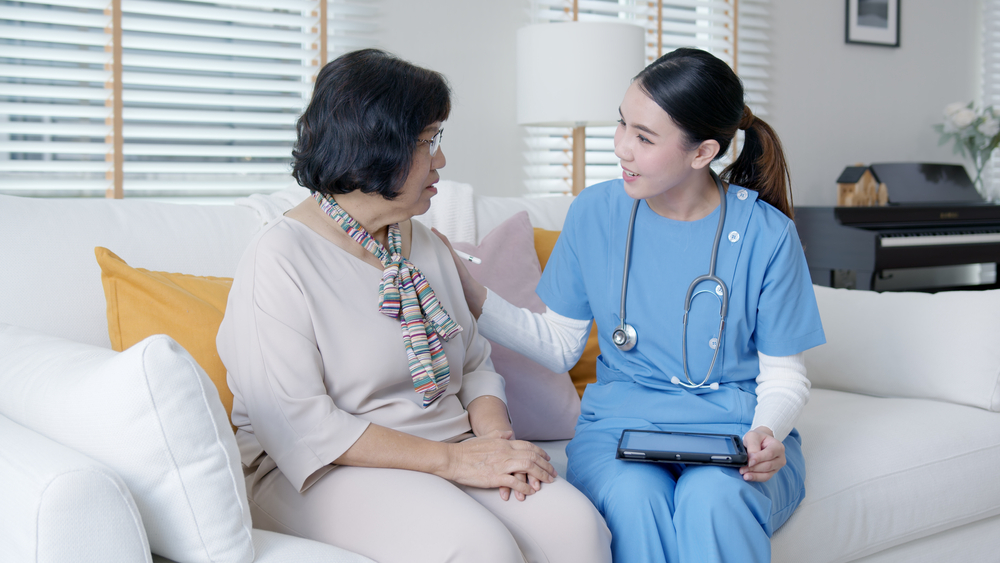Telehealth: A Game-Changer for Elderly Care in Australia
The healthcare industry has witnessed a massive shift over the last few years, driven largely by the rise of telehealth services. This has had a profound impact on aged care where Australia’s aging population means that more innovative solutions are needed so that our provision of health care can keep up with the pace of growth in seniors.
Telehealth, which takes advantage of the use of digital technologies to provide healthcare remotely, has emerged as a lifeline for seniors. It ensures accessibility, affordability, and quality of care is in reach for all Australians.
The Growing Demand for Aged Care in Australia
Australia’s population is aging rapidly. According to the Australian Bureau of Statistics (ABS), 16% of Australians were aged 65 and over in 2021, a figure expected to rise to 22% by 2057. This demographic shift has placed immense pressure on the healthcare system, with increasing demand for services tailored to the needs of older Australians.
Key Challenges in Traditional Aged Care

Geographic Barriers:
Many elderly individuals live in rural or remote areas, where accessing healthcare services can be challenging.

Limited Mobility:
Physical disabilities and chronic conditions often make traveling to clinics or hospitals difficult for seniors.

Rising Healthcare Costs:
Traditional care models can be prohibitively expensive, especially for those on fixed incomes.

What is Telehealth?
Telehealth refers to the use of technology to provide healthcare services remotely. This can include virtual consultations, remote monitoring of chronic conditions, and online prescriptions. Through video calls, mobile apps, and wearable devices, telehealth enables healthcare providers to deliver timely and effective care to patients, regardless of their location.
Benefits of Telehealth for Elderly Care

Enhanced Accessibility
Telehealth bridges the gap for seniors in rural and remote areas, allowing them to consult with specialists and primary care providers without leaving their homes.

Convenience and Comfort
For elderly patients with limited mobility, telehealth eliminates the need for travel, reducing stress and physical strain.

Cost-Effective Solutions
Telehealth services often come at a fraction of the cost of in-person visits, making healthcare more affordable for seniors.

Better Chronic Disease Management
Chronic conditions such as diabetes, hypertension, and arthritis are prevalent among older Australians. Telehealth enables regular monitoring and timely interventions, improving overall health outcomes.

Reduced Risk of Infection
In the wake of the COVID-19 pandemic, minimising exposure to infectious diseases has become a priority. Telehealth allows seniors to access care without the risks associated with in-person visits.


How Telehealth is Transforming Elderly Care in Australia

Government Support and Policies
The Australian government has been proactive in promoting telehealth through initiatives such as Medicare-subsidised telehealth consultations. This support has made remote care more accessible to seniors.

Integration of Advanced Technologies
Technological advancements, including artificial intelligence (AI) and wearable health devices, are enhancing the scope and efficiency of telehealth services. These tools enable real-time monitoring and personalised care.

Collaborative Care Models
Telehealth facilitates better coordination among healthcare providers, caregivers, and patients, fostering a holistic approach to elderly care.

Mental Health Support
Telehealth is also addressing the mental health needs of seniors by providing access to counseling and therapy services, which are often overlooked in traditional care models.
Challenges and Limitations of Telehealth

Digital Literacy: Many seniors may struggle with using the technology required for telehealth.

Internet Connectivity: Reliable internet access is crucial for telehealth services but remains a challenge in some remote areas.

Personalised Care Limitations: Some aspects of healthcare, such as physical examinations, cannot be fully replicated through telehealth.


The Future of Telehealth in Elderly Care

Expanded Access: Ongoing efforts to improve internet infrastructure in rural areas will make telehealth more accessible.

Improved Training: Initiatives to enhance digital literacy among seniors will enable more widespread adoption of telehealth.

Integrated Platforms: The development of unified telehealth platforms will streamline care delivery, integrating services such as diagnostics, prescriptions, and follow-ups.
How My Telehealth Clinic Can Help in the care of the Elderly

Comprehensive Services
We provide a wide range of telehealth services tailored to the unique needs of seniors, including virtual consultations, chronic disease management, and mental health support.

Easy-to-Use Technology
Our telehealth technology is designed with simplicity in mind, ensuring that seniors with limited digital literacy can use it effortlessly.

Affordable Care Options
We offer cost-effective telehealth solutions with bulk billed appointments in most cases, making quality healthcare accessible for seniors on fixed incomes.

Specialist Access
Through our network of healthcare professionals like Nurse Practitioners, seniors can consult with specialists without the need to travel long distances. At My Telehealth Clinic, we are committed to enhancing the quality of life for older Australians by delivering accessible, affordable, and comprehensive care.

Frequently Asked Questions about Elderly Care and Telehealth
The future of telehealth is bright, with advancements in technology, improved internet access, and government support paving the way for broader adoption.
